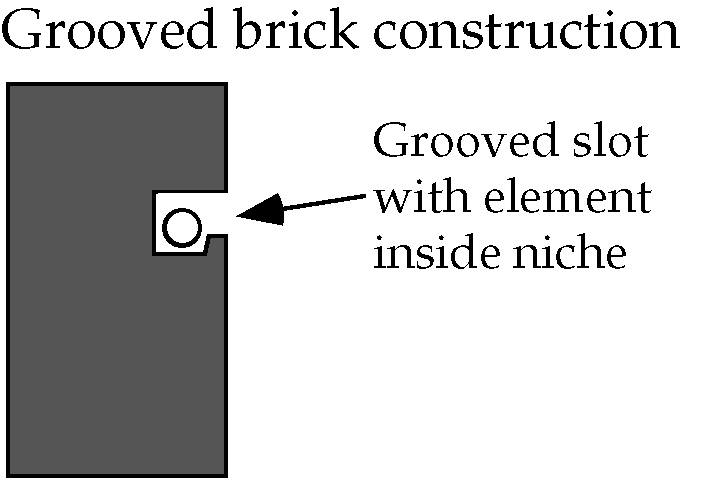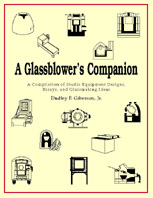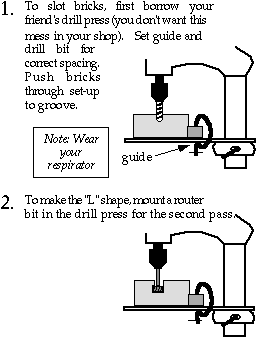The Grooved Brick Construction Technique
The Traditional Approach For
Installing Elements In Soft Brick Kiln
|  |
- Relatively shock proof. The element is not exposed and is not easily touched.
- Student resistant. (Nothing is student proof.)
- Easy installation.
- Heavy duty- long oven life. You will tire of the oven long before it wears out as its life expectancy is 25-30 years.
- Heat retention. The oven has lots of mass so if the door is opened, it will not chill as quickly as would a fiber insulated oven.
- Wide heat use. Can be used over a wide temperature range: annealing at the low end (950° F), glass casting in the middle range (1600° F), and high fired ceramics on the top end (2200° F).
- Simplified annealing. Because of the mass it doesn't need as many steps in the turn down for annealing .
Disadvantages:
- Dinosaur construction. It is heavy and hard to move. Not good for the jet set type.
- More expensive to operate. Costs more to heat up and operate than does an all fiber model. In order to anneal glass at 950° F you first have to heat all the bricks to 950° F. Over the life of the oven this could mean a lot of money perhaps thousands of dollars.
- Takes longer to heat up. Ditto, reasons in point 2, above.
Above, Drill Press used to Groove Soft Bricks (Insulated Fire Bricks)
Note: For more information on installing
elements in soft brick kilns read
Chapter 18 & 19 in Dudley's new book,
A Glassblower's Companion. |
 |



